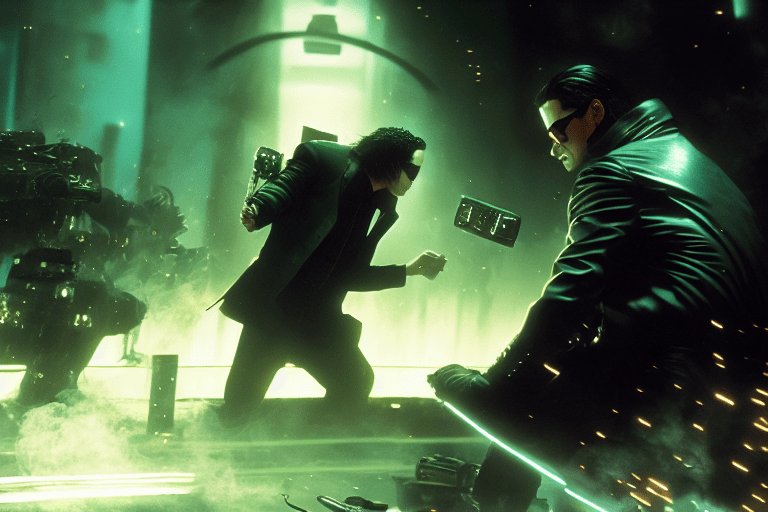The Matrix (1999) – A General Introduction to and Movie Review

The year 1999 marked the release of a sci-fi film that became a cultural phenomenon and reshaped the action genre. The Matrix, directed by the Wachowski siblings, features an ensemble cast of Keanu Reeves, Laurence Fishburne, and Carrie-Anne Moss, and tells the story of a dystopian future where machines control humanity through a computer-generated simulation called the Matrix. What sets The Matrix apart from other films is its unique blend of cyberpunk, kung fu, and philosophy, creating a thrilling, mind-bending adventure that explores themes of reality, truth, identity, and consciousness. Even after over two decades since its release, The Matrix continues to captivate audiences with its innovative concepts and stunning visuals.
The Matrix takes place in a dystopian future where machines have taken over the world and enslaved humanity in a virtual reality program known as the Matrix. The Matrix is a complex computer simulation that tricks humans into believing they are living normal lives while their bodies are used as an energy source for the machines. The film follows Neo (Keanu Reeves), a computer programmer who discovers that his entire life has been a lie and that he is, in fact, living in the Matrix. With the help of the rebel leader Morpheus (Laurence Fishburne) and his crew, including the badass Trinity (Carrie-Anne Moss), Neo sets out to defeat the machines and free humanity from their enslavement.

The Matrix was a groundbreaking film in many ways. It was one of the first major movies to use “bullet time” technology, which allowed for slow-motion shots of characters dodging bullets in mid-air. The action scenes in The Matrix are some of the most memorable in movie history, with incredible choreography and innovative camera work. The fight scenes are a mix of kung fu, wire work, and gunplay, all done with a sense of style and precision that is still impressive over 20 years later.
But The Matrix was more than just a great action movie. It was a film that asked big questions about the nature of reality, free will, and the role of technology in our lives. The movie is full of references to philosophy, religion, and mythology, and it invites viewers to think deeply about the world around them. The film’s central message is that we are not in control of our own lives, that our reality is shaped by external forces that we may not even be aware of. The Matrix challenges us to question the status quo and to seek out the truth, even if it means facing uncomfortable realities.

One of the things that makes The Matrix so effective is the strength of its characters. Keanu Reeves is perfect as the reluctant hero Neo, a man who starts out as a blank slate and gradually becomes a powerful force for change. Laurence Fishburne brings gravitas and wisdom to the role of Morpheus, while Carrie-Anne Moss is fierce and captivating as Trinity. The film’s villains, led by Hugo Weaving’s Agent Smith, are equally compelling, with their cold, calculating demeanor and their complete devotion to the machine overlords.
Another key element of The Matrix’s success was its visual style. The film’s use of green tinting and other color effects gave it a distinct look that has been imitated by countless other movies and TV shows. The costumes and sets are also iconic, with the black leather and sunglasses worn by the main characters becoming instant pop culture touchstones.

In the years since its release, The Matrix has become a cultural touchstone in its own right. Its influence can be seen in everything from video games to fashion to other movies. It spawned three sequels and a related animated feature, although some were not as well-received as the original. Nevertheless, The Matrix remains a landmark film that redefined what was possible in action movies and challenged audiences to think deeply about the world around them. It is a must-see for anyone who loves sci-fi, action, or thought-provoking cinema.







